As an Amazon Associate I earn from qualifying purchases.
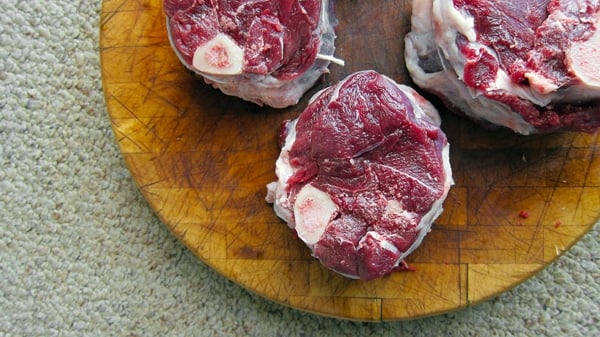
I don’t think I go a month without someone asking me about food safety and wild game, and by far the most common questions are about trichinosis, notably in relation to wild boar and bear meat. I’ve studied this issue for several years, and I find no real issue — provided you know a few ground rules. Allow me to lay out what I know to hopefully put your mind at ease.
Let’s start with what we’re talking about. While it is certainly possible to get food poisoning from wild game, it is actually quite rare for people to pick up E.coli 0157, salmonella, toxoplasmosis or brucellosis from game meats. And when it does happen, the cause is usually related to contamination by the hunter or whomever dresses and processes the meat.
The more pressing concern is trichinosis, a condition you develop from eating still-active larvae of the trichinae parasite, which lives in the flesh of primarily carnivores and omnivores, although there are a few stray reports of it occurring in deer. Note my use of the phrase “still-active” in that last sentence; it’s important and I will explain below.
As it happens, the trichinae parasite is extremely rare in wild game and it is even more rare for anyone to become sick with trichinosis from eating game. According to a Centers for Disease Control study that surveyed incidence of the disease from 2008 to 2012, there were only 84 cases of trichinosis in all of America. Of those, 43 were eating wild game. That’s 43 people in a five-year period, and 30 of those 43 were in one incident, an unfortunate party I’ll describe in detail later. Consider that number when you think of the millions of people who eat wild game every year.
Of course, if you are one of those unlucky few, trichinosis is not to be trifled with. A heavy dose of antibiotics will indeed cure the symptoms — diarrhea and nausea, muscle pain, weakness, even nervous system and heart problems — the larval cysts (pictured at right) will remain in your muscle tissue — meaning that if someone were to eat you, they’d get trich, too. Trippy, eh? Oh, and if you never seek treatment for the illness, it can be fatal. Bottom line is that trich is no fun.
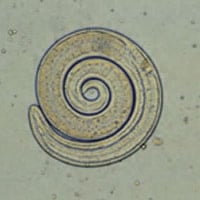
It is a fact that bear and cougar meat are the most prominent vectors for trichinosis in North America. Pigs, which are what most people think of when they think of trich, are actually not commonly infected. Trichinosis from domesticated pork is all-but absent these days, which is why the USDA — an organization well known to be overly cautious and is believed by many to be scientifically suspect when it comes to meat safety in the real world — dropped the “safe” cooking temperature of pork from 160°F to 145°F in 2011.
Wild pigs are a bit more of an issue. Depending on what state you live in, the incidence of infection varies. One study showed a 13 percent incidence of trichinae parasites in North Carolina, which is more or less the commonly agreed on rate of infection. Interestingly, other than two freak appearances of the Eurasian Trichinae pseudospiralis, which shouldn’t actually exist in North America, Texas hogs appear to be largely free of the parasite, according to this research.
And guess what? According to that CDC study I linked to above, only six cases of trichinosis were tied to eating wild pigs. Six. In five years. You have a better chance of getting struck by lighting on a boat, falling over and then being eaten face-first by a shark.
Bear meat, not pork, is the real problem. (As is mountain lion meat, but only a very few people eat that.)
Bears appear to be heavily infected by the parasite, so much so that you should assume the meat is infected. In that CDC study, 41 of the 84 total cases of trichinosis reported in America between 2008 and 2012 were from bear meat. That is still a tiny fraction of the thousands of people who eat bear every year, but it’s enough to warrant further discussion.
Some bad news: There is not just one trichinella parasite. There are many. Here in North America we have five major species: Trichinae spiralis, which is the most common and hangs out with pigs for the most part; then T. nativa, T-6 and T. murrelli, which are almost always found in wild game — chiefly bears.
There is a wide body of research covering T. spiralis, and it is this research that produced the admonition to freeze meat for a month before eating it raw or undercooked comes from. Specifically, it assumes that if you freeze wild boar or some bear meat for 20 days at 5°F or lower the parasites will be rendered inert.
Note that freezing will not kill them, but it will prevent the wee beasties from attaching to you. Keep in mind that the 20 days start when the core of the meat reaches 5°F, which can actually take several days in most freezers. That’s why I freeze for at least a month with bear or wild boar I plan on making into salami, just to be sure. All of this applies to T. murrelli, too.
You can also kill any trichinae parasite by heat. And the “kill temperature” is a helluva lot cooler than you might think. The origin of the odd USDA mandated internal cooking temperature of 160°F appears to be the government trying to account for inaccuracy and idiocy. (That temperature is more relevant for salmonella than trich.) The actual temperature that kills the trichinella parasite is 137°F, which happens to be medium-rare.
But be forewarned: Every iota of meat must hit that temperature to kill the parasite, and cooking bear meat to medium-rare isn’t a guarantee of that. In fact, Steve Rinella and his crew ate rare bear meat in Alaska recently and most of them got trichinosis. Steve did a video about the experience here.
You can certainly make medium-rare bear meat safe using the sous vide method, but you’d need to hold the meat at 137°F for an hour or so to make sure — and then you’d want to sear it on the outside to kill any possible bacteria that survived that low temp. As for me? I like to sous vide bear at about 145°F for an hour or more, which is still a lovely tender and pink piece of meat, and is safe to eat that way.
Unfortunately, the two trichinella species most associated with bears are immune to freezing. These are T. nativa, the Canadian and Alaskan species, and T-6, the dominant species of parasite from a line stretching from about Washington state across to Maine down to the Rockies, the Great Plains, the Midwest and the Northeast — really where all the good bear hunting is. Only southern states appear to be immune to this species. (Here is a map from a Stanford study.)
The CDC survey noted one particularly nasty outbreak of trichinosis, interestingly in my home state of California, in 2008. Thirty of 38 people eating undercooked black bear got the disease. It is the first known occurrence of humans picking up trich from T. murrelli in America; this is the easily killed strain that likes our warmer states. Everyone who got the disease ate either undercooked or raw (?!) black bear meat at a party.
This is an excerpt from the investigation:
Interviews revealed that the bear had been legally hunted a few days before the event in a mountainous region in California about 100 miles east of Humboldt County. The bear was reportedly lying down when shot and appeared to be sick; it was butchered on a table that was later used to serve food. Raw dishes were prepared with chopped meat, and cooked bear meat dishes included stir fries, lentil-based stews, and rice/meat mixtures.
Clearly there are all kinds of food safety issues going on here, and the tragedy is that they technically could have made their raw bear dishes had they frozen the meat for a month first — the strain of trichinae that attacked them can be rendered inert when frozen.
Finally, let me address the making of salami and other cured meats with wild boar and bear.
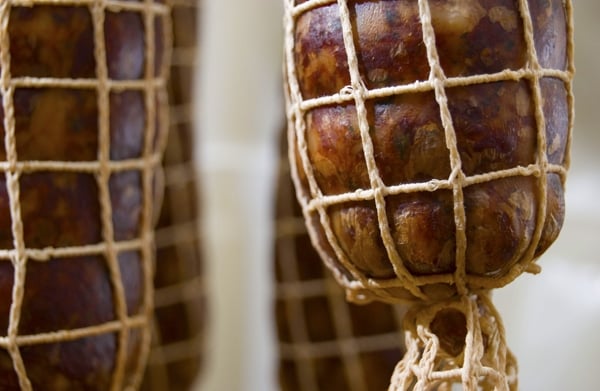
Obviously these are, for the most part, not cooked. So how can they be safe? Culinary Science Professor Bob del Grosso says the exact mechanism is hazy, but this is the working theory:
The literature is a bit unclear on how this works. However, it suggests that it is not the salt that kills the larvae, it is protein-digesting enzymes released by fermentation bacteria. I suspect that what happens is more complicated and looks something like this: The salt lowers the water activity of the meat, which means that less water is available to the larvae. The fermentation bacteria produce acid which also lowers the water activity while the acid wrecks the metabolism of the larvae which, like many living things needs to be close to pH 7 (neutral) to work properly. All of that, plus the enzymes, toxic oils from the herbs, etc. plus nitric oxide from the nitrate, beat the hell out of the trich.
All these processes going on should prevent you from actually getting trichinosis, which is why people have been safely making salami with wild and domesticated pigs for 2000 years. But you need to be a careful curer of meats and not take shortcuts.
The key figure here is at least 2 percent salt by weight of the total meat and fat. So if you make a 5-pound batch of salami, as I often do, you will need at least 45 grams of salt to be totally safe. I tend to use a bit more, like 50+ grams to get close to 2 1/2 percent by weight. (Here is the relevant study of this.)
Now here’s the caveat: While there has been lots of study done on salt curing and T. spiralis, there’s been almost nothing done on salt’s effect on the other species of the parasite. So it’s all deduction when it comes to bear charcuterie. Wild boar charcuterie should follow the same guidelines as those for domesticated pork, because they have easily killed strains of the parasite. Even though may not think you need to, out of an abundance of caution, my advice is to freeze wild boar and bears shot in warm-weather states before starting your salami, and to avoid straight-up salami with bear meat in colder areas — unless the meat is cooked somehow.
So that’s what I know. To sum up:
- Most wild pigs don’t have the parasite. But since trichinosis is no fun, it’s best to freeze your meat for 30 days to a month just to be sure — then you can eat it like domestic pork, which is to say a nice 145°F at the center.
- For salami, you technically don’t have to freeze wild boar, so long as your salt concentration hits 2 1/2 percent and you cure the meat for at least two weeks. But freezing isn’t a bad idea. Finally, for bear, best to cook it through no matter what you do, unless you are in the South, in which case freeze and treat as pork.
- Use common sense. A great many of the illnesses hunters and game processors do contract are from contact with the innards/blood/infected parts of the animals. If you have any cuts on your hands at all, wear gloves to gut and process your animals. And if you nick yourself, wash with soap and water and get a glove. And if you don’t nick yourself, wash with soap and water afterwards. I know, I shouldn’t have to say that, but several case studies I read involved people gutting a pig and then going out for a sandwich. There was stuff on their hands and they ended up eating it with their burger. No bueno.
Nothing you do is without risk. Eating is no exception. I hope this allays any undue fears about getting trichinosis from wild game. Follow a few simple rules are you should be fine.

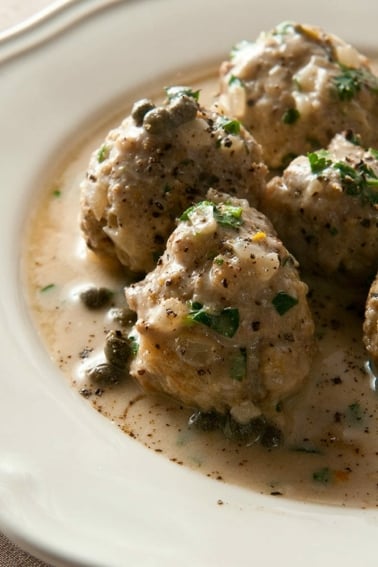
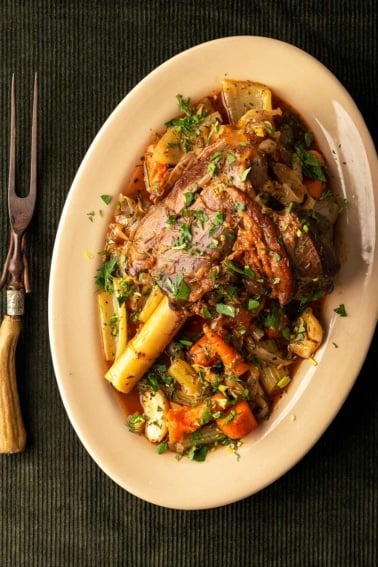
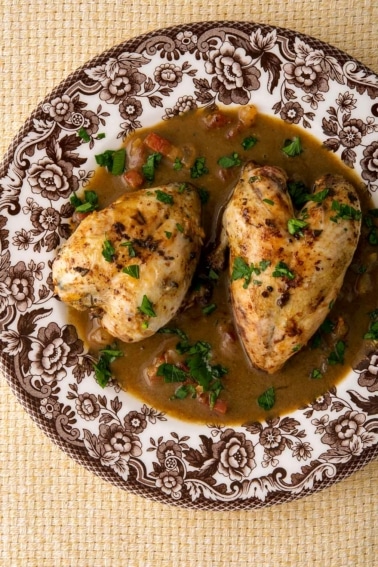

Great information, Hank!
Do you have similar maps for the distribution of brucellosis and information on the associated risks in making dry-cured salami from Florida wild hogs?
What about cleaning work/kitchen areas with bleach solution? Does anyone have any reliable info on whether that kills the parasite?
Atomic: That sure helps, but not within the meat.
Hank, just finished processing a AK black bear I took earlier this week (so freezing is not a solution). I was “freshening” up on this article. I was thinking of doing a small batch of jerky. Not a lot of info out there on black bear jerky. Was going to dehydrate. Could use trager smoker too, but it’s a small amount for that. Dehydrator goes to 160F. Thoughts with jerky or dehydrating that differ?
Hello,
Great information but I couldn’t access the map you referenced concerning the areas that contain the trichinoss that is resistant to freezing.
This past season I harvested a Black Bear in NE Tennessee and was hoping to know if freezing will kill the parasite.
Edward: Tennessee is in the region of Trichinella spiralis and Trichinella murrelli. Neither can withstand freezing. So you should be OK. Google “Trichinella nativa” and “map” and you will see the distribution.
Is there any data on Trich in cervids? I was not aware they could even get it. Would it include all the strains? Is freezing the answer? Many of us enjoy meat that wouldn’t make 137F. I’d appreciate your take.
Bill: There isn’t a lot. But it has been recorded in the US a couple times in the past 25+ years. I am willing to take that risk.
Thanks for the article!
I picked up a fresh roadkill fox, skinned and dressed it. Only the forelegs seemed salvageable to cook. I boiled them for about 75 minutes. Then seared on both sides for about 10 minutes total. It was interesting flavor. But i ate both of them.
I have looked into potentially freezing bear meat to get rid of any Trichinosis with a $350, 1 cu ft freeze that goes down to -25C(-13F). As mentioned many strains exist and adapt to the Northern cold winters and even down under -20C(-4F) thrive to survive over a year. Here is a source shown a map of different strains and how well they adapt to cold weather. https://www.sciencedirect.com/science/article/pii/S2405676616300129 Additionally, the meat must be cut into certain size strips to be effective. The best course is to cook the wild game per Hank Shaw methods.
Thanks for this great article! My wife and I were just having a discussion of “trich” over a meal involving venison meatballs and I googled it, saw this article in the top 5 and thought to myself, “I should have known Hank would have covered this subject!” Thank again!
Many thanks for an excellent article! All the best to you
Question, I want to make Alaska moose biltong, which involves some salt (but not 2%) and a cold drying process. The meat has been frozen for 2 months. Bad idea? From what I’ve read Alaska moose can, but are unlikely, to be infected by the freeze resistant trich.
What if I took my finished biltong, vacuum packed it (to keep it dry) then sous vide it to 145? That should make it safe but might mess with the texture.
Next time I’ll sous vide it before drying.
Doug: Trich in cervids is so rare I’d go for it. Unless you have data that says otherwise, and if you do, I’d love to read it.
Excellent article with lots of great information. There is some confusion on safely cooking bear meat in my facebook sous vide group. You pretty much cover all aspects of the debate and show that you can safely cook and pasteurize wild game against trichinosis without ruining the meat at temperatures above 160 degrees. Thanks again for this great article. Perhaps include the legitimate references at the end of your article to help substantiate the information. I’d love to attach a link to your article in my facebook group, and even though I agree with everything in this article, without clear cited references, I wouldn’t share it. Thanks!
Thank you for the article, this was very interesting and informative. I have cougar meat that I am now freezing for a month. Do you have any recommendations or recipes on how to cook the tenderloin and backstrap? The cougar is from Washington State if that makes any difference for the trich strain. Thanks
Jenny: I don’t, sorry. I personally don’t eat cats. All I could say would be that those cuts might have the “nativa” strain of trich which is not killed by freezing because you are in the north. I’d thoroughly cook it.
It’s nice to know that it doesn’t take very high temperatures to kill parasites in wild game meat. I’m interested in looking for a wild game recipe blog soon because a new meat shop recently opened near where I live. They have quite the exotic selection of meats that I would surely want to try out soon.
I have 2 frozen boar legs that I want to turn into prosciutto. They’ve been frozen for about 3 weeks so it’s easy to wait one more, but is salt alone enough? Does the lack of fermentation mean greater risk?
Hey Dave,
While it does not seem like there is fermentation going on, rest assured that there is. The salt creates a high salinity environment that halophilic bacteria thrive in. These are the “good bacteria” that are involved in fermentation. The quote that he linked is an educated guess and we are not quite sure what kills the parasite. It could be the salt, it could be the nitrates, or it could be the enzymes (proteases) that kill the parasite. I would venture a guess that there is a synergistic effect with all of the listed processes.